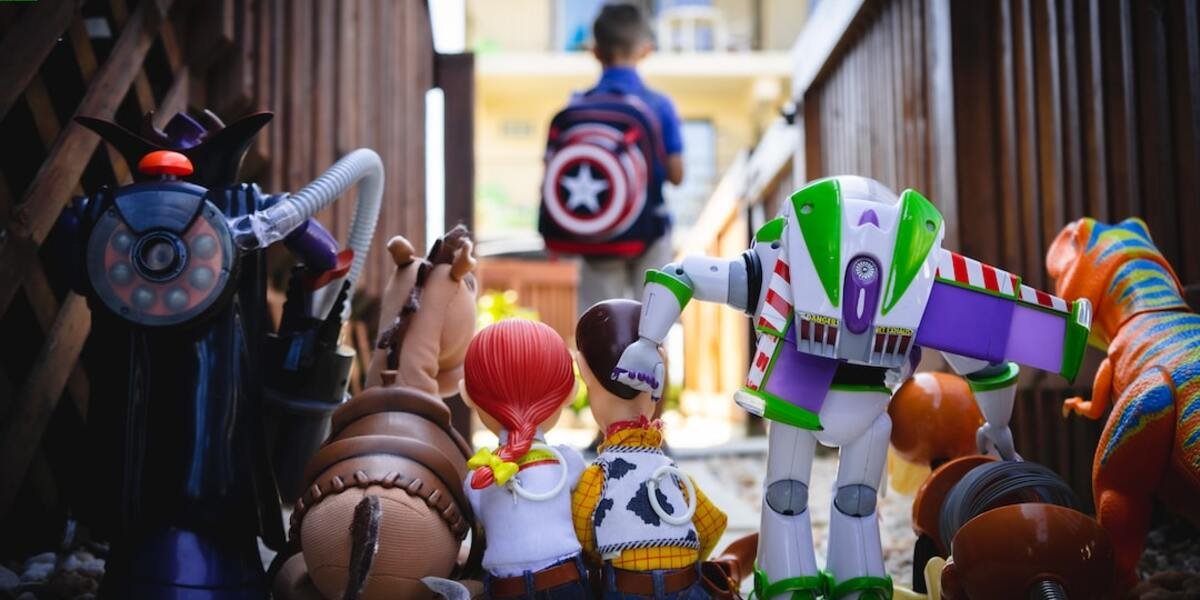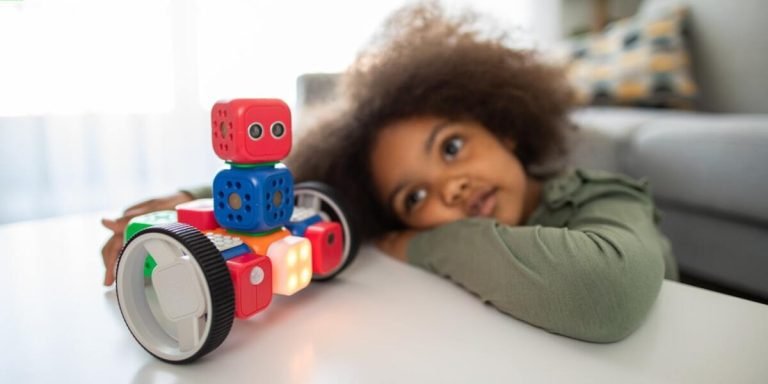What is a Learning Disability? Understanding and Recognizing the Signs in Children
When we consider the question, “what is a learning disability?” it’s crucial to understand that this term encompasses more than just difficulties with academic progress. A learning disability refers to neurological disorders which can affect information processing and understanding. They are usually inherent but they manifest differently in individual children; showing up as challenges in reading, writing, math or even non-academic skills such as coordination or social interaction.
The nuances of identifying these signs may seem intricate at first glance given their broad spectrum and intricacy. However, with appropriate special education resources and support mechanisms available today, parents and educators are better equipped now – more than ever before- on how best to recognize early warning signals for prompt intervention.
Did you know?
Surprisingly, learning disabilities often co-exist with other conditions such as attention deficit hyperactivity disorder (ADHD) and dyslexia. Approximately 33% of children diagnosed with a learning disability also have ADHD according to the Learning Disabilities Association of America.
Understanding Learning Disabilities: Definitions and Types
Understanding learning disabilities is crucial in the wider context of childhood education. A learning disability, as defined by experts, refers to a wide group of disorders manifested through significant difficulties in listening, speaking, reading, writing or mathematical abilities. These disorders are intrinsic to individuals and generally result from differences within the structure and functioning of their brain.
Learning disabilities come in several forms:
- Dyslexia, involving difficulty with language-based skills
- Dyscalculia, characterized by trouble with arithmetic comprehension
- Dysgraphia, entailing struggles related to writing
- Auditory processing disorder, where children struggle with sound-related tasks despite normal hearing capabilities
- Visual perceptual/visual motor deficit affecting coordination between sight and physical movement
- Non-verbal learning disabilities causing problems with abstract thought or interpreting social cues
Technology integration has become increasingly substantial for special educational resources support targeting learners who have been diagnosed with such conditions. In this digital era marked by AI-driven technologies like speech recognition software or virtual reality simulations, accommodations are constantly evolving both at home environments & school settings aiming not only remediation but also empowerment for kids grappling daily battles against their own neural frameworks.
Recognizing the Signs of a Learning Disability in Children
Learning disabilities can manifest in a myriad of ways, often leaving parents and educators puzzled. Understanding what is a learning disability helps to identify possible signs promptly, ensuring the child receives necessary special education resources and support.
A key sign of learning disabilities in children involves difficulties with academic performance that persist despite adequate teaching efforts. For instance, if your child struggles with reading even after consistent tutoring or has trouble understanding basic math concepts while their peers seem to grasp these readily.
Some children might also display problems remembering information taught shortly before an event known as short-term memory deficit. This often manifests when they cannot recall simple instructions or forget homework assignments frequently.
Delayed language development could indicate a potential learning disability too – pay attention if your little one lags behind others around his age group in speaking fluently or comprehending complex phrases.
Issues concerning motor skills warrants attention as well; clumsiness or difficulty executing fine motor tasks like tying shoelaces may suggest certain types of dyspraxia — a common type of learning disorder.
Finally yet importantly are behavioral signs such as having trouble sitting still (hyperactivity), excessive daydreaming (inattentiveness) which may point towards Attention-Deficit/Hyperactivity Disorder — another common formative condition requiring special educational strategies for management.
Differentiating Between Dyslexia, ADHD, and Other Common Conditions
When we talk about learning disabilities, it is essential to understand that this term encompasses a broad category of conditions. One might ask: what is a learning disability? In simple terms, these are neurological disorders that affect the brain’s ability to receive, process, store and respond to information.
Among them, some common ones include Dyslexia and Attention Deficit Hyperactivity Disorder (ADHD). However distinct they may be from one another; it can sometimes be challenging for parents or educators unfamiliar with the nuances of each condition. Understanding their unique characteristics would provide better support through appropriate resources in Special Education.
Dyslexia primarily affects an individual’s reading skills. Children diagnosed with dyslexia often struggle with spelling words correctly while reading aloud fluently becomes taxing as well. They also face difficulty understanding phrases or sentences since they could not interpret letters into meaningful sounds successfully—a direct impact on comprehension subsequently follows due lack thereof auditory processing skill development early on.
Strategies for Supporting Students with Learning Disabilities
The contemporary educational landscape has profoundly transformed, integrating an array of technology to create a supportive and inclusive learning environment for all students. However, when we delve into the realm of special education resources and support specifically around understanding ‘what is a learning disability,’ it becomes imperative that these technological integrations are accessible, sensible, adaptive.
In today’s digital age where everything from gaming to grocery shopping is revolutionized by technology in 2023. The role of modern devices and software cannot be overemphasised in facilitating tailored educational strategies designed for supporting students with learning disabilities. These smart solutions pave the way towards customization which caters to individual pacing needs thus helping children explore their potential while overcoming challenges posed by such conditions.
Adaptive Learning Systems (ALS) along with Augmented Reality(AR) can potentially minimize knowledge gaps by personalizing content as per each child’s needs thereby fostering cognitive development at a pace suitable for them. Such systems further track progress allowing educators or guardians insight on areas requiring additional attention making this approach effective yet flexible.
Implementing Individualized Education Programs (IEPs)
Implementing Individualized Education Programs, commonly known as IEPs is a critical step towards supporting students with learning disabilities. If you’re asking yourself what exactly “what is a learning disability?”, it’s simply challenges in the area of knowledge and skills acquisition which makes traditional methods of instruction less effective.
Technology integration in education has made individualized teaching approaches easier. In 2023, emerging technologies sparked revolutionary changes in special education resources and support systems, creating more conducive environments for children with various cognitive impairments.
Here are four ways technology can bolster the implementation process:
1) Customizable Learning Modules: EdTech companies now offer tailor made modules that cater specifically to each student’s unique needs per their IEP goals. Each module focuses on strengthening areas where these learners find difficulty – be it math concepts or language abilities.
3) Game-Based Learning: Virtual games serve multiple purposes – they engage students actively fostering enthusiasm for lessons whilst subtly working on addressing challenge areas including memory enhancement techniques and problem-solving skill sets.
Utilizing Assistive Technologies in Special Education
Assistive technology has emerged as a vital tool in supporting students with learning disabilities. A question often raised by parents and educators alike is ‘what is a learning disability?’ It’s typically defined as the neurological disorder that affects one’s ability to read, write, spell or solve math problems. Educators today have several strategies at their disposal for addressing such issues and ensuring every child can learn effectively.
The first strategy involves using assistive technologies like speech-to-text software which are immensely beneficial for those struggling with writing due to dysgraphia or other similar conditions. This allows them to voice out their thoughts while the computer types it down verbatim – allowing them not just an alternative way of expressing themselves but also enhancing their confidence significantly.
Building an Inclusive Environment for Diverse Learners
Building an inclusive environment for diverse learners is a crucial facet of modern education, with specific focus given to students who may be dealing with learning disabilities. The question that often arises among concerned parents and educators alike is “what is a learning disability?” By definition, it’s a neurological disorder that affects the brain’s ability to receive, process or communicate information — essentially interrupting the way individuals learn.
With technology playing such a pivotal role in all walks of life as we step further into 2023, advocating its integration into educating children with special needs has gained immense relevance. Innovative tools are constantly being introduced as viable support systems designed specifically keeping these unique learners’ requirements in mind.
The connection between ‘Special Education Resources’ and technological adaptations cannot be understated at this juncture when inclusivity takes centre stage within classrooms worldwide. Combining tech-driven teaching methods along with customized resources allows facilitation of distinctively tailored instruction which addresses each learner’s individual abilities rather than focusing on their limitations.
Fostering Collaboration Among Educators, Parents, and Specialists
Technology has revolutionized numerous sectors, and education is no exception. For children with learning disabilities, technology integration in special education resources offers immense support to educators, parents, and specialists working towards the same cause.
Firstly let’s address “what is a learning disability?” A learning disability refers to diverse conditions that affect how an individual absorbs information. Conditions could range from dyslexia (difficulty reading) to ADHD (attention deficit hyperactivity disorder). In contemporary times of 2023 where inclusivity stands at the forefront of educational progressions; it becomes indispensable for those involved in shaping these young minds – teachers, guardians or specialized professionals- must work collaboratively ensuring inclusive environments are built within classrooms.
The advent of specific digital tools now allows us comprehensive tracking and monitoring student progression more efficiently than ever before. The data thus obtained can be shared among educators easily which helps identify patterns as well as areas requiring attention expeditiously allowing quicker responses facilitating considerable enhancements on intervention strategies devised for tackling various issues concerning children with special needs relating particularly their learning abilities.
Adapting Classroom Techniques to Accommodate Various Disabilities
Understanding the fundamental question – what is a learning disability? – aids us in redefining our teaching strategies effectively and working towards special education resources and support.
A learning disability, simply put, can alter a child’s ability to receive information or express knowledge just like their peers do. It doesn’t define their intelligence but explains how differently they process information compared with other students.
How then do we go about creating an accommodation plan that caters to these diverse learners?
1) Assistive Technology: One of the prime ways through which this adaptation takes place is via technology integration in education. The year 2023 has seen progressive advancements making several types of assistive technologies available for use within classrooms.
From text-to-speech software for dyslexic students who struggle with reading printed words aloud to motion sensor devices assisting those grappling with motor skills – innovative tools are transforming traditional pedagogies drastically while ensuring inclusion at every step possible.
2) Flexibility In Learning Styles: Catering exclusively to auditory or visual means alone will not yield the desired results when you have diverse learner groups involved.
Let’s say one student may be quick at picking up lessons visually while another might grasp concepts better when presented audibly during class discussions- so why restrict ourselves only on one type instead mix both approaching universally designed instruction?
Conclusion
Recognizing what is a learning disability in children isn’t always straightforward, but with vigilance and understanding, parents and educators can help youngsters navigate their unique challenges. Armed with knowledge on the signs of different learning disabilities, we have the power to steer these precious individuals towards paths that augment their strengths while addressing areas they struggle.
Our website serves as an indispensable resource for more information about childhood education. Don’t stop at just grasping ‘what is a learning disability?’ Dive deeper into our content pool teeming with insights on various educational strategies for different learners and critical support tools for both parents and educators alike. Remember, every child has untapped potential; it’s all about finding the right key to unlock it!







